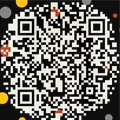比利时海岸线上的“沙虫”艺术装置 / Casagrande Laboratory
[ad_1]
“沙虫”是在比利时文杜宁海岸线的沙丘上实现的有机结构 “生物”。 45米长,10米宽, 安装在建筑和环境艺术之间自由移动,完全由柳树构成,随着当地对工作与环境之间的互动的了解。 Casagrande与他的年轻建筑师和当地专家团队努力工作了4个星期,以创造一个他所描述的“薄弱建筑” – 人造结构,希望通过灵活性和有机存在成为自然的一部分。访客将桑orm are描述为一个柳树大教堂,精心设计,以庆祝文杜宁潮滩的具体情况。该空间用于野餐,放松和后工业冥想。
Sandworm is an organic structure “organism” that is realized on sand dunes on the shoreline of the bele vening sea. 45 metres long and 10 metres wide, the installation moves freely between architecture and environmental art, made entirely of willows, with local knowledge of the interaction between work and the environment. Casagrande young architects and local experts with his team to work hard for four weeks, in order to create a “weak” he described – artificial structures, hope that through the flexibility and organic being is part of nature. Visitors describe sanorm are as a willow-tree cathedral, carefully designed to celebrate the conditions of the tidal flats of vindunin. This space is used for picnic, relaxation and post-industrial meditation.














“在沙虫里面,你会看到自然的光和影的奇观。我很惊讶。你怎么能用这么简单的天然材料创造出这样的美。艺术家认为建筑控制是违背自然的,也是违背建筑的。构建的人类环境是人的本性和自然本身之间的中介。要成为其中的一部分,人必须是软弱的。对芬兰艺术家马尔科·卡萨格兰德来说,设计是不够的。设计不应取代现实。建筑必须从位置上生长出来,它必须对环境做出反应,它必须是生命的反映,也必须是它自己,就像其他生命一样。”
“Inside the sandworm you are greeted by a natural spectacle of light and shadow. I was amazed. How you can create such beauty with such simple natural materials. The artist believes that architectural control goes against nature and thus also against architecture. The built human environment is a mediator between human nature and nature itself. To be part of this, man must be weak. To the Finnish artist Marco Casagrande designing is not sufficient. Design should not replace reality. The building must grow out of the location, it must react to its environment, it must be a reflection of life and also be itself, as every other living being.”












 Photos by Nikita Wu.
Photos by Nikita Wu.
项目名称:”沙虫”
项目类型:艺术装置
位置:比利时
完成年份:2012
设计公司:Casagrande Laboratory
Project name: Sandworm
Project type: Art installation
Location: Wenduine, Belgium
Completed: 2012
Designer: Casagrande Laboratory
[ad_2]










